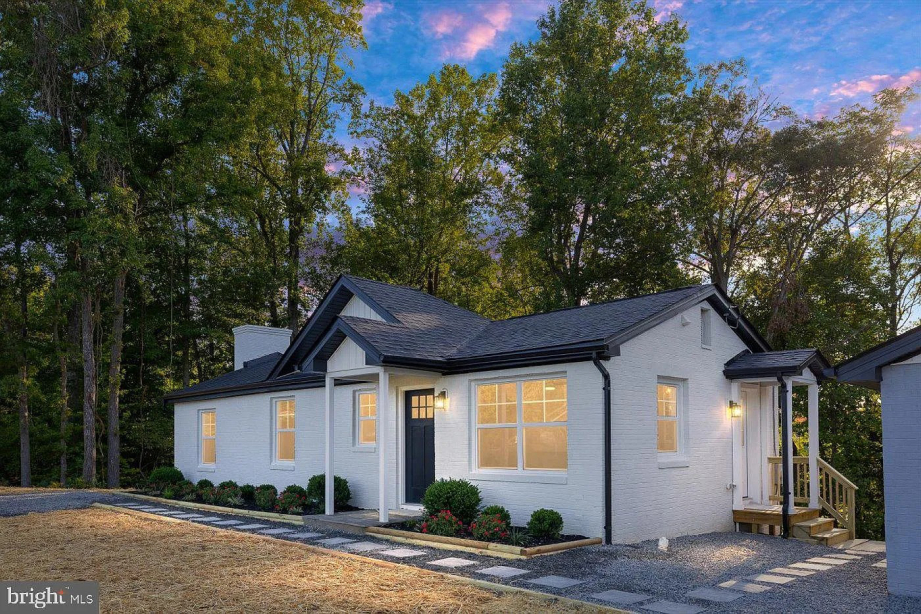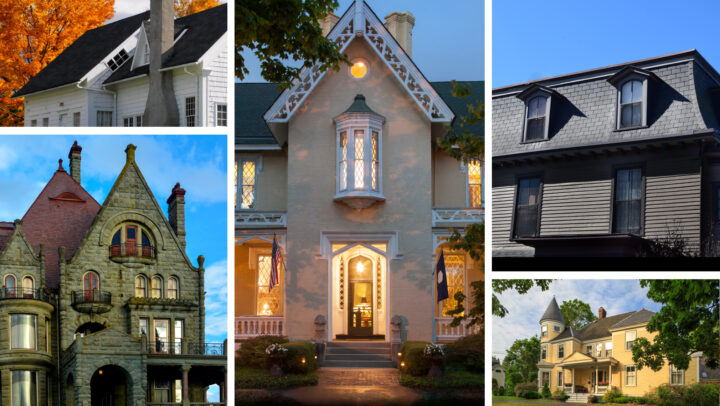Can You Buy a House After Filing Bankruptcy?


There are two types of bankruptcies that can be filed that may impact your ability to buy a home: Chapter 7 and Chapter 13. The good news is that buying a house after filing for bankruptcy is possible, but most buyers with a past bankruptcy will need to go through a waiting period and rebuild their credit first.
In this article, we’ll discuss how long you’ll have to wait to buy a house after filing for bankruptcy, and how different types of bankruptcy filings impact the waiting period. We’ll also discuss the types of mortgages you can get after bankruptcy, and how to apply for a mortgage with a bankruptcy mark on your credit report.
How does bankruptcy impact your ability to buy a home?
Filing for bankruptcy can cause your credit to drop suddenly, which can make it difficult to qualify for a mortgage in the future. When a lender runs a credit check on you, they’ll be able to see that you declared bankruptcy. Chapter 7 bankruptcy stays on your credit report for 10 years, and Chapter 13 bankruptcy stays on your credit report for 7 years.
How long after filing bankruptcy can you buy a house?
Borrowers who have declared bankruptcy can qualify for a home loan after 2-7 years. The waiting period is determined by the type of bankruptcy you filed (either Chapter 7 or Chapter 13), the type of home loan you are applying for, and how the bankruptcy was settled. At the end of your bankruptcy case, the court will either dismiss or discharge your bankruptcy.
Dismissed bankruptcy: Means the court has stopped proceedings, typically because your request for dismissal was approved, or you failed to meet bankruptcy requirements.
Discharged bankruptcy: Is a legal order to release you from your personal liability. At that point, you’ll be absolved of any further responsibilities with your creditors included in your bankruptcy case.
Buying a house after Chapter 7 bankruptcy
Chapter 7 bankruptcy is typically approved for debtors with limited income who are unable to repay their creditors through regular, monthly payments. During a Chapter 7, the court satisfies your qualifying debts by liquidating your assets. This type of bankruptcy stays on your credit report for up to 10 years and causes your credit score to drop by 130-200 points, depending on what your credit score is at the time.
After filing Chapter 7 bankruptcy, you’ll need to wait 2-4 years from the discharge date before you can buy a house. The discharge date is the day the court officially eliminates your repayment obligations to creditors. In a Chapter 7 bankruptcy, the discharge date usually occurs around 4-6 months after the bankruptcy filing.
Here is an overview of the waiting periods by loan type when trying to buy a house after your Chapter 7 bankruptcy.
| After discharge date | After dismissal date | |
|---|---|---|
| Conventional | 4 years | 4 years |
| FHA | 2 years | 2 years |
| VA | 2 years | 2 years |
| USDA | 3 years | 3 years |
Buying a house after Chapter 13 bankruptcy
A Chapter 13 bankruptcy, also known as a reorganization bankruptcy, allows debtors to create a debt repayment plan to discharge some, or all of your debts. This type of bankruptcy is substantially different from a Chapter 7 and only stays on your credit report for a maximum of 7 years.
After filing a Chapter 13, you’ll need to wait 1-4 years from the discharge date before buying a house. It’s important to note that the discharge date on a Chapter 13 bankruptcy is different from the discharge date on a Chapter 7 bankruptcy. This is because the court only discharges debts on a Chapter 13 after the repayment plan is complete, which usually takes 3-5 years.
Although it’s unusual for debtors to obtain a home loan while they’re in the middle of a Chapter 13, it’s possible to get approved for a FHA, VA, or USDA loan if you’ve made at least 12 months of timely payments and received court approval.
Here is an overview of the waiting periods by loan type when trying to buy a house after your Chapter 13 bankruptcy.
| After discharge date | After dismissal date | |
|---|---|---|
| Conventional | 2 years | 4 years |
| FHA | No waiting period | 1 year |
| VA | No waiting period | 1 year |
| USDA | No waiting period | 1 year |
Can you get a mortgage with a bankruptcy?
There are no specific rules preventing you from getting a mortgage after filing for bankruptcy. As long as you wait for the appropriate amount of time before applying, you can pursue any type of home loan. However, some mortgage loans can be pursued sooner than others, specifically mortgages insured by the government. Take a closer look at the common types of mortgages you can apply for after bankruptcy.
Conventional loan
Conventional loans are the most common types of mortgages. They’re offered by banks, credit unions, and other financial institutions. Loan amounts, terms, and rates vary depending on the lender. However, most conventional mortgages require a credit score of 620, or higher, and a down payment of 3-20%. Borrowers can apply for a conventional loan 4 years after the discharge date on a Chapter 7 bankruptcy and 2 years after the discharge date on a Chapter 13 bankruptcy. If you got your Chapter 13 bankruptcy dismissed, you would have to wait 4 years before applying for a new conventional mortgage. When extenuating circumstances can be documented, a 2 year waiting period is permitted after a Chapter 13 dismissal.
FHA loan
A FHA loan is a mortgage insured by the Federal Housing Administration. These loans are often easier to qualify for than conventional loans, because they have lower credit and down payment requirements. Borrowers with a minimum credit score of 500 can secure an FHA loan with a 10% down payment, while borrowers with a credit score of 580 or higher only need to put down 3.5%. Borrowers can apply for an FHA loan 2 years after a Chapter 7 bankruptcy and immediately after a Chapter 13 bankruptcy is discharged. You’d have to wait at least one year if your Chapter 13 bankruptcy was dismissed.
USDA loan
A USDA loan is a mortgage insured by the Department of Agriculture. These loans are reserved for low- to moderate-income borrowers living in designated rural areas. Borrowers don’t need to make a down payment or pay for private mortgage insurance (PMI). These loans also come with lower interest rates than conventional loans and sometimes allow borrowers to roll closing costs into their loan repayments. Borrowers can obtain a USDA loan 3 years after their Chapter 7 bankruptcy is discharged, and immediately after their Chapter 13 bankruptcy is discharged. They’d have to wait at least one year before applying for a USDA loan if their Chapter 13 bankruptcy was dismissed.
VA loan
A VA loan is a government-insured mortgage facilitated by the Department of Veteran Affairs. These types of loans are reserved for veterans, active service members, and their spouses. Similar to USDA loans, VA loans allow borrowers to secure a mortgage with 0% down and allow for 100% financing of the home’s purchase price. VA loans also come with lower interest rates than conventional loans and don't require PMI. Borrowers can pursue a VA loan 2 years after their Chapter 7 bankruptcy is discharged, or immediately after a Chapter 13 bankruptcy is discharged. You can apply for a VA loan one year after your Chapter 13 bankruptcy is dismissed.
How to get a mortgage after filing for bankruptcy
Applying for a mortgage post-bankruptcy is similar to a regular mortgage application. There are just a few more steps you’ll need to take to improve your eligibility. Borrowers with a bankruptcy on their credit report may need to explain their bankruptcy filing to potential lenders, provide a copy of the court discharge/dismissal and rebuild their credit. Here’s a closer look at the steps you’d need to take.
Repair your credit
Whether you filed a Chapter 7 or a Chapter 13, chances are your credit took a hit. The first thing you want to do before applying for a mortgage is rebuild your credit. Here are three simple strategies you can implement to boost your score.
Automate bill payments
Scheduling your credit card and loan payments is an easy way to improve your credit. Most creditors have an auto-pay feature that automatically deducts your monthly payment on the due date. The longer you remain consistent with debt repayments, the easier it is to establish a strong credit history.
Quickly pay down the remaining debt
You may have some debts that don’t qualify for Chapter 7 or Chapter 13 bankruptcy. If that’s the case, you should do everything you can to pay down these debts as soon as possible. Redirect any extra cash towards paying down debts not included in your bankruptcy filing. This shows future creditors that you’re serious about reducing your debts and improving your financial standing.
Get a secured credit card
Rebuilding your credit can be particularly difficult if you don’t have any debts to pay off and can’t get approved for a new line of credit. One way to get around this is to get a secured credit card and put down a cash deposit with the credit card company. The deposit essentially becomes your line of credit, which can be repaid monthly just like a credit card. You can get a secured credit card after bankruptcy and with a low credit score.
Apply for pre-approval with multiple lenders
A pre-approval is an important step in the mortgage application process for all borrowers, but especially those with a bankruptcy mark on their credit. Fortunately for borrowers, multiple pre-approvals within a 45 day period count as one hard credit pull on your report. There’s no limit on how many pre-approvals you can get, so get as many as possible within a 45-day window to get the best terms and rates. Keep in mind that a pre-approval is not the same as a prequalification. A prequalification does not require asset verification, making it less reliable than a pre-approval. Sellers prefer to see a pre-approval letter to confirm that a lender is willing to provide you financing. About a third of mortgage buyers (31%) say they were denied financing at least once before ultimately getting approved, so having a pre-approval in hand will set you apart from the crowd.
Respond to lender questions in a timely manner
Lastly, you’ll want to maintain strong communication with potential lenders from the time you submit your mortgage application to the time you’re approved. It’s not uncommon for lenders to have questions about your application.
Try your best to respond promptly and provide additional documentation as needed. This helps establish rapport between you and the lender. Even if you don’t get approved, you can ask the lender to explain their reasons for denial, which can help inform your subsequent applications.
Final thoughts on buying a house after bankruptcy
The important message here is that bankruptcy shouldn’t stop you from pursuing homeownership. Although filing for bankruptcy can be devastating, you can still get approved for a home loan when the time is right. To take the necessary steps to rebuild your credit, pay down your debts, and communicate with potential lenders. At Zillow Home Loans*, we offer several mortgage options. Speak with one of our loan officers to learn more about mortgages and how to start the pre-qualified process.
*An equal housing lender. NMLS #10287
The information provided in this article is for educational purposes only and is not intended to provide legal, financial, or other professional advice.
How much home can you afford?
At Zillow Home Loans, we can pre-qualify you in as little as 5 minutes, with no impact to your credit score.
Zillow Home Loans, NMLS # 10287. Equal Housing Lender
Get pre-qualifiedA great agent makes all the difference
A local agent has the inside scoop on your market and can guide you through the buying process from start to finish.
Learn more


